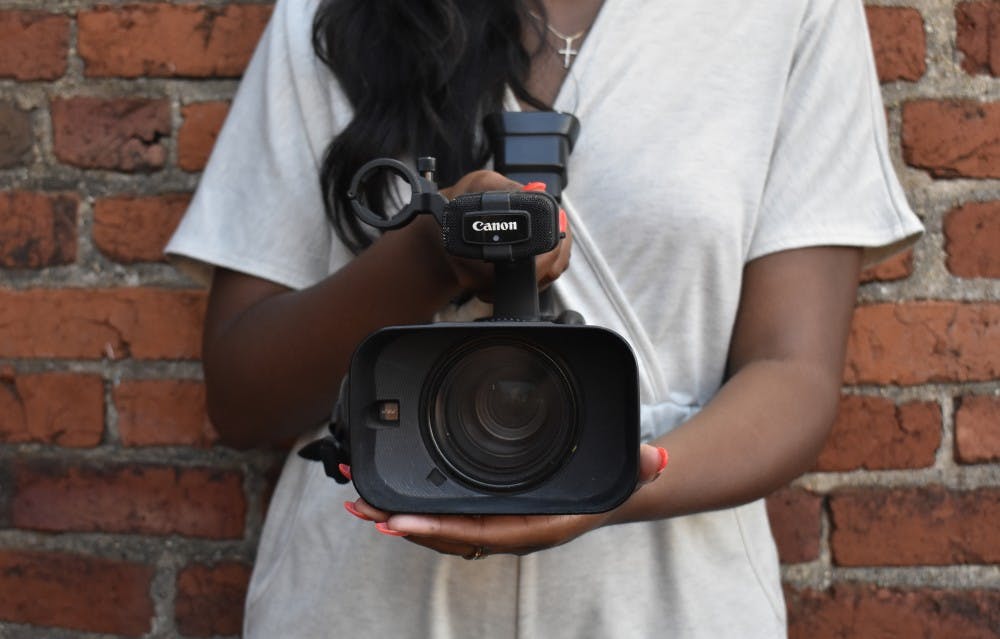Katie Otto’s allergies were acting up as she stood in Merritt’s Pasture to scout her film location. The wide expanse of wild grass behind Fordham Boulevard would serve as one of her primary backdrops for her 2018 experimental film, “Against the Morning Sun.”
Otto’s work is a dreamy, one-woman piece with shifting perspective and advanced editing inspired by the avant-garde work of Maya Deren, one of America’s most influential experimentalist filmmakers.
Deren won a Guggenheim grant for her creative film work. She established the Creative Film Foundation to encourage other independent filmmakers. And, like most people, Otto had never heard of her.
“There’s not a lot of women filmmakers in the mainstream that we hear about, and that’s definitely a problem.” Otto, a senior communications and women’s and gender studies double major, said. “Out of curiosity, I Googled ‘famous filmmakers.’ Google pulled up a list of people they’ve compiled. I counted. Out of 51 people, three of them were women.”
To help shed light on this trend, and to highlight the achievements of women in film, the Ackland Art Museum, partnered with the UNC Department of English and Comparative Literature, will host a semester-long, seven-film series celebrating female film directors.
Focused on films from the past 30 years, “Women with a Movie Camera: American Female Directors 1990-Present” will include in-depth looks at race, gender and sexuality through genres ranging from horror to documentary.
“The series includes multiple genres, production modes (both mainstream and independent films), and cultural contexts,” said Rick Warner, associate professor of film at UNC. “It encompasses directors from a range of ethnic backgrounds and involves multiple student organizations, who will introduce certain films that relate to their interests.”
Warner also mentioned how creative opportunities in film have been skewed towards men since the industry’s beginning. According to The Center for Study of Women in Television and Film, of the top 100 grossing films of 2017, women made up just 14 percent of editors, 10 percent of writers and eight percent of directors.
In fact, only one woman, Kathryn Bigelow, has ever won an Academy Award for Best Director. It was for “Hurt Locker,” and it happened over eight years ago.



